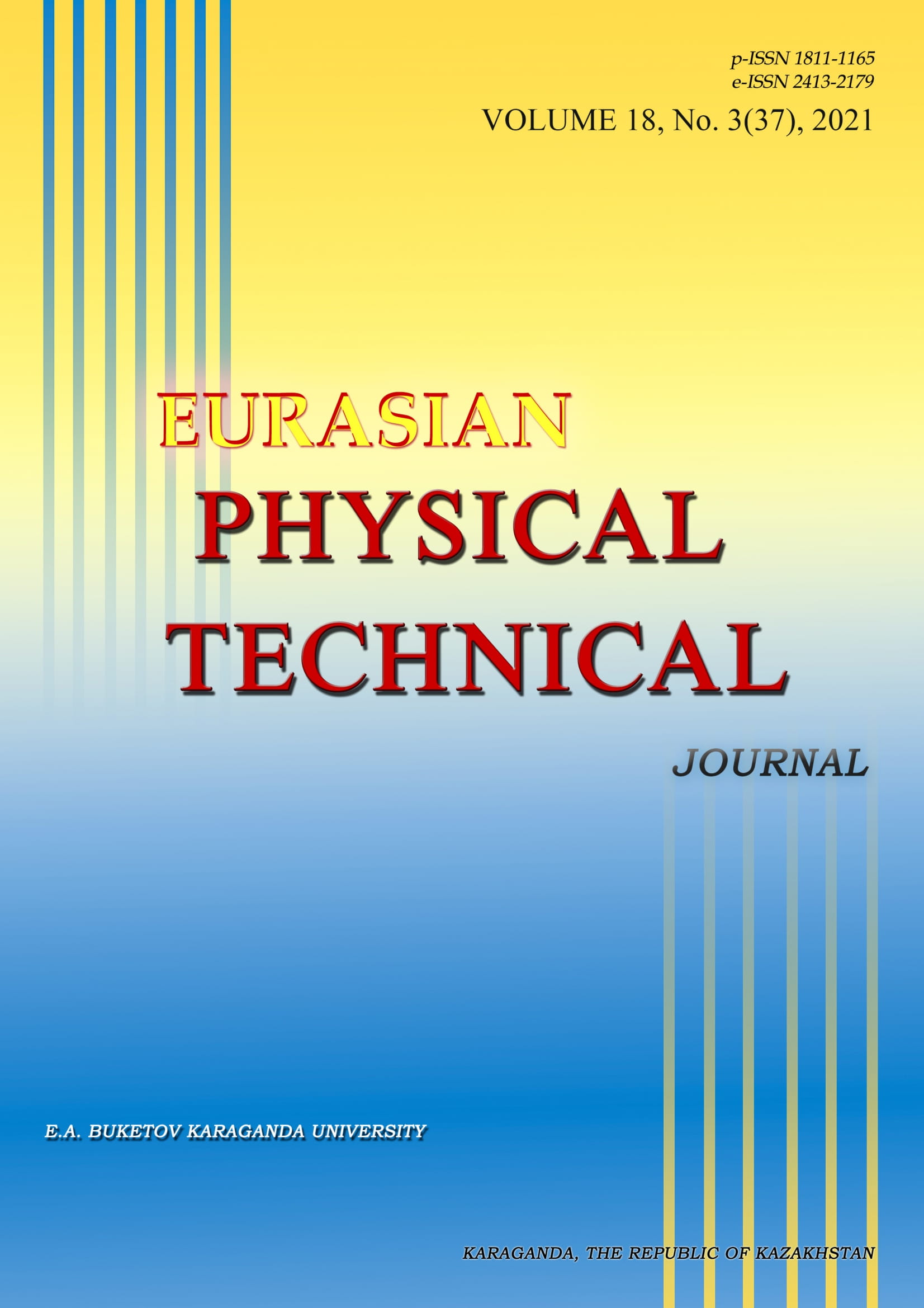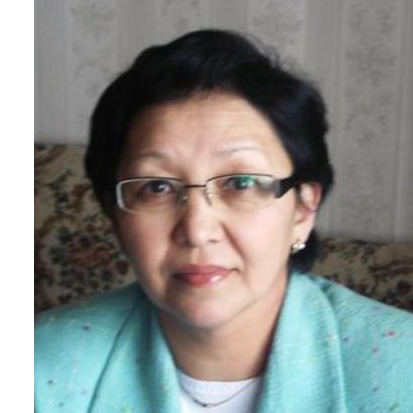Anisotropy of the surface of carbon materials
DOI:
https://doi.org/10.31489/2021No3/15-24Keywords:
diamond, graphite, carbyne, fullerenes, nanostructures, surface layer thickness, surface energy, anisotropy.Abstract
In this work, a model of the surface layer of perfect single crystals is used and the role of surface energy in physical processes occurring in the region of nanosized carbon materials is clarified. Of these, diamond, graphite, carbyne and fullerenes have been investigated. The thickness of the surface layer of diamond with cubic symmetry is 8.2 nm and is a nanostructure. The average size of the synthesized nanodiamond is of the order of ~ 8 nm. The value of the surface energy σhkl calculated by us along the diamond planes (100), (110), and (111) is in good agreement with experiment and other calculations. The thickness of the surface layer of graphite along the a axis is equal to R(I)a = 8.0 nm and also represents a nanostructure. But along the c axis we have a layer thickness of about 1.5 nm and the number of monolayers is only 2. On this c axis, graphite can be created a monolayer by turning it into graphene. The σhkl value calculated by us along the a and c planes of graphite is 25957 and 5515 mJ/m2, respectively. Carbines represent a polymeric polyyne or cumulene chain composed of sp-hybridized carbon atoms. If we imagine that the thickness of the surface layer of carbyne is stretched into a one-dimensional chain along the c axis, then the length of this chain is up to 200 nm for α-carbyne. The thickness of the surface layer of fullerenes significantly exceeds the thickness of the surface layer of pure metals. The surface energy of fullerenes σhkl increases with an increase in the number of carbon atoms С36 → С96. It also changes in the series (111) → (100) → (110).
References
"1 Yurov V.M., Oleshko V.S. The impact of the environment on the contact potential difference of metal machine parts. Eurasian Physical Technical Journal. 2019. Vol.16, No. 1(31), pp. 99 – 108.
Yurov V.M., Makeeva O.V., Oleshko V.S., Fedorov A.V. Development of a device for determining work electron output. Eurasian Physical Technical Journal. 2020, Vol.17, No. 1(33), pp. 127 – 131.
Yurov V.M., Goncharenko V.I., Oleshko V.S. Anisotropy of the surface of cubic body-centered crystal lattices. Eurasian Physical Technical Journal, 2021, Vol.18, No. 1(35), pp. 9-15.
Bochkarev V.P. Development of physical and chemical principles for assessing the effect of surface energy on the properties of materials and processes for microelectronic technology. Dissertation for degree of Doctor of Technical Sciences, Moscow, 2020, 299 p.
Yurov V.M., Goncharenko V.I., Oleshko V.S. Anisotropy of surface energy and thickness of the surface layer of magnetic nanostructures. Nano- and microsystem technology, 2021, V. 23, No.2, pp. 8-14.
Yurov V.M., Goncharenko V.I., Oleshko V.S. Anisotropy of the surface layer of d - elements. Modern high technologies. 2021, No. 2, pp. 88-93.
Orlov Yu.L. Mineralogy of diamond. Moscow: Nauka, 1984, 70 p.
Bullakh A.G., Zolotarev A. Atlas of structures of minerals - simple substances, sulfides. St-Petersburg, I997, 28 p.
Liopo V.A., Ovchinnikov E.V., Sabut A.V., Voznyakovsky A.A. Structural features of diamond nanocrystals. Progressive technologies and systems of mechanical engineering, 2017, No. 1 (56), pp. 73-84.
Наrkins W. D. Energy Relations of surface of Solids. Journal Chem. Phys., 1942, V. 10, pp. 268–272.
Nozhkina A.V., Kostikov V.I. Surface energy of diamond and graphite. Rock-cutting and metal-working tools - technique and technology of its manufacture and application, 2017, No. 20, pp. 161-167.
Ormont B.F.Introduction to physical chemistry and crystal chemistry of semiconductors. Moscow, 1968, 487p.
Oshcherin B.N. On surface energies of ANB8-N semiconducting compounds. Phys. Status Solidi, 1976, A 34, No. 2, pp. K 181-К186.
Magomedov M.N. On the surface properties of nanodiamonds. Physics of the Solid State, 2010, Vol. 52, No. 6, pp. 1206 – 1214.
Zhmurikov E.I., Bubnenkov I.A., Pokrovsky A.S., Kharkov D.V., Dremov V.V., Samarin S.I. Graphite in Science and Nuclear Engineering. Novosibirsk, 2013, 198 p.
Kudryavtsev Yu.P., Evsyukov S., Guseva M., Babaev V., Khvostov V. Chemistry and Physics of Carbon: A Series of Advances. New York-Basel-Hong Kong: Marcel Dekker, Inc., 1997, Vol. 25, pp. 1 – 65.
Kasatochkin V.I., Savransky V.V., Smirnov B.N., Melnichenko V.M. Study of Carbyne Condensed from Carbon Vapors. DAN SSSR, 1974, Vol. 217, No. 4, pp. 796 – 799.
Korobova Yu.G., Bazhanov D.I., Khvostov V.V., et al. Effect of hydrogen impurity on the atomic and electronic structure of the crystalline modification of carbyne. VMU. Series 3. Physics. Astronomy. 2013, No. 1, pp. 37-44.
Zeynalov E.B. Fullerenes: Information Collection (1991-2006). Baku: ""Nurlan"", 2007, 521p.
Kovalenko V.I., Khamatgalimov A.R. Structure and stability of higher fullerenes. Moscow, RAS, 2019, 212 p.
Shpilevsky E. Fullerenes -new molecules for new materials. Science and Innovation, 2006, No.5(39), pp.32-38.
Magomedov M.N. About fullerene interaction and properties of fullerites. Thermophysics of high temperatures, 2005, V. 43, No. 3, pp. 385 – 395.
Yurov V.M., Guchenko S.A., Laurinas V.Ch. Surface layer thickness, surface energy, and atomic volume of an element. Physicochemical aspects of studying clusters, nanostructures and nanomaterials, 2018, Vol. 10, pp. 691-699.
Gleiter H. Nanostructured materials: basic concepts and microstructure. Acta mater. 2000. V.48, pp. 1 – 29.
Borisova P.A. Phase transitions in amorphous fullerenes and their interaction with metals. Dissertation for degree of the Candidate…, Moscow, 2016, 113 p.
Romanenko A.V., Simonov P. Carbon materials and their physical and chemical properties. Moscow, 2007, 128p.
Dolmatov V.Yu. Detonation nanodiamonds: synthesis, structure, properties and application. Advances in Chemistry, 2007, Vol. 76(4), pp. 375 – 397.
Novoselov K.S., Geim A.K., Morozov S.V., Jiang D., Zhang Y., Dubonos S.V., Grigorieva I.V., Firsov A.A. Electric field effect in atomically thin carbon films. Science, 2004, V. 306, pp. 666 – 669.
Neto A.C., Guinea F., Peres N.M.R., Novoselov K.S., Geim A.K. The electronic properties of grapheme. Rev. Mod. Phys., 2009, Vol. 81. - pp. 109-161.
Shi L., Rohringer P., Suenaga K. et al. Confined linear carbon chains as a route to bulk carbyne. Nature Mater. 2016, Vol. 15, pp. 634–639.
"















